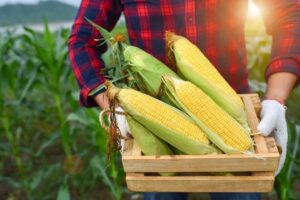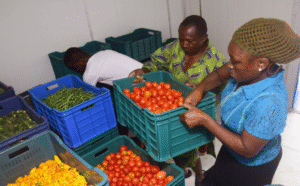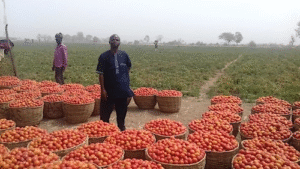Nigeria is a country with enormous agricultural potential, but post-harvest losses have been a significant challenge in the agricultural sector. Post-harvest losses occur at various stages of the value chain, from harvesting to transportation, processing, and storage. These losses not only affect the livelihoods of farmers and agribusinesses but also have a negative impact on food security and the economy. According to a report from https://guardian.ng/news/nigeria/fg-centre-move-to-address-post-harvest-losses-by-farmers/ the federal government has stated that over 30 percent of food produced in Nigeria every year is challenged by post-harvest losses due to a lack of storage facilities transportation and lack of equipment. In this article, we will explore innovative solutions and best practices for managing post-harvest losses in Nigerian agriculture.
Improving Harvesting Techniques
The first step in reducing post-harvest losses is to ensure that the crop is harvested at the right time and with the right technique. Using the wrong harvesting technique can damage the crops, which can lead to spoilage and losses. For example, when harvesting maize that will be stored, it should be harvested when it reaches a optimal maturity stage and it is typically indicated by dried brown husks, hard kernels and a moisture content of around 23-28%. Harvesting at the right time ensures better yield and grain quality. It is also important to harvest fruits and vegetable crops when they are ripe to avoid premature spoilage.

Proper Handling and Transportation
After harvesting, the crops must be handled with care to minimize losses. Proper handling involves sorting, grading, and packing the produce in suitable containers. Sorting and grading help to separate the produce into different categories based on their quality and size, which makes it easier to market them. Packing the produce in suitable containers helps to prevent damage during transportation. Farmers and agribusinesses should also consider using refrigerated trucks and other temperature-controlled vehicles to transport perishable produce to the market. This is why we applaud the work of https://taklogisticsltd.com/ a company tasked with transporting agricultural produce from one region to another in Nigeria by using the right type of vehicle and thereby reducing post harvest losses.

Effective Storage Techniques
Storing crops in proper conditions is crucial to preventing post-harvest losses. Some crops require specific storage conditions to stay fresh and maintain their quality. For example, vegetables such as tomatoes and peppers require cool and dry storage conditions, while fruits such as mangoes and oranges require humidity control. It is essential to store crops away from pests, rodents, and insects, which can damage the crops and cause losses. Farmers and agribusinesses should also consider investing in modern storage technologies such as cold rooms and solar dryers, which can help extend the shelf life of crops and minimize losses. The effort of https://www.coldhubs.com/ a corporation tasked with extending the shelf life of perishable food from 2 days to 21 days, and reducing post-harvest loss by 80%, is admirable in light of this.

Value Addition and Processing
Value addition and processing are effective strategies for reducing post-harvest losses in Nigerian agriculture. Value addition involves converting crops into higher-value products such as juices, jams, and sauces, which have a longer shelf life and are less susceptible to spoilage. Processing crops also involves the use of modern technologies such as dehydration, canning, and freezing, which can help to preserve the crops’ nutritional value and quality. Value addition and processing can also create employment opportunities and increase the income of farmers and agribusinesses. Just like how Tomato Jos https://tomatojos.net/ specializes in the processing and packaging of tomatoes into various products such as tomato paste, sauce and canned tomatoes.

Conclusion
According to Premium Times https://www.premiumtimesng.com/news/more-news/548219-post-harvest-nigeria-loses-n3-5trn-annually-minister.html?tztc=1, the Federal Minister of state for Agriculture and Rural Development stated that the annual economic cost of post-harvest losses in the agricultural sector is N3.5 trillion during a meeting at the International Standard Organization (ISO) Certification for Nigerian Stored Products Research Institute in Abuja.
Post-harvest losses remain a significant challenge in Nigerian agriculture, but innovative solutions and best practices can help to minimize losses and improve the productivity of the sector. Effective post-harvest management requires a combination of good harvesting techniques, proper handling and transportation, effective storage techniques, and value addition and processing. Farmers, agribusinesses, and policymakers must work together to implement these strategies and reduce post-harvest losses, which will contribute to the country’s food security and economic development.


